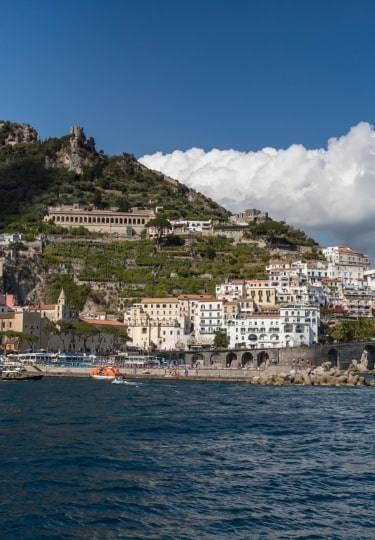Sun-drenched southern Italy is where Mediterranean cultures have collided over the millennia, giving rise to towns and cities influenced by the Greeks, Romans, Arabs, Normans, and more.
The antiquities here are extraordinary and the setting glorious, defined by craggy coastlines, towering volcanoes, shimmering seas, and seemingly endless cultivation of olives, lemons, and vines.
If you’ve visited the north and think you know Italy, think again. The south, generally regarded to be everything beyond Rome—the “toe” and the “heel” of the country’s distinctive boot shape—and the islands of Sicily and Sardinia, is completely different.
Sunnier, slower, arguably richer in ancient sites, more laid back—this is a different face altogether of the bel paese, or “beautiful country”.
Why Visit Southern Italy
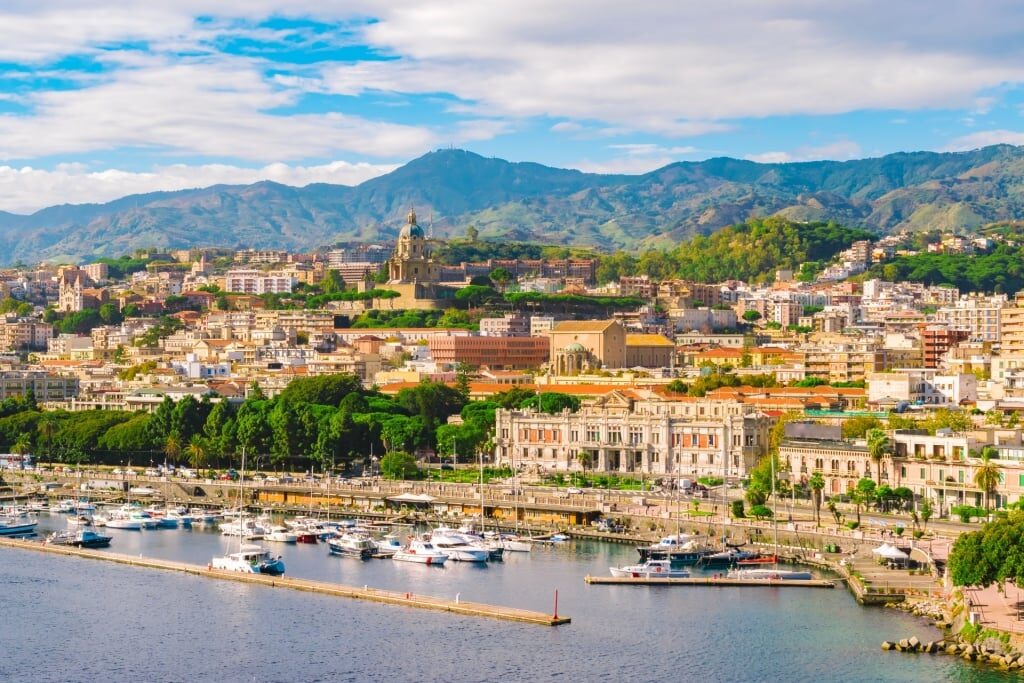
Messina
Southern Italy has it all: an extraordinary history, rich culture, dramatic scenery, volcanoes, endless sandy beaches, fine food, olive oil, and wine.
It’s almost impossible to view the whole of the south, and its two substantial Mediterranean islands, Sicily and Sardinia, as one destination. You’ll find such detailed regional variations in cuisine, wine, natural scenery, and architecture that a tour of this fascinating area feels like multiple vacations in one.
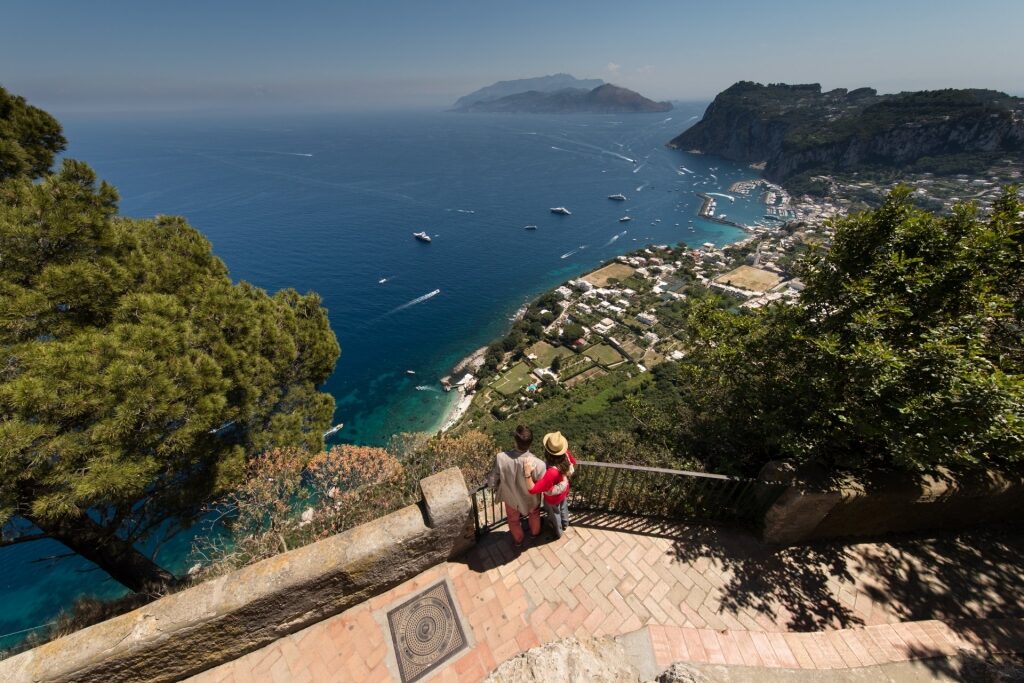
Capri
Come for the Italian beaches of Sardinia and Puglia, the glamor of Capri and Amalfi, the pizza in Naples, and the volcanic splendor of Sicily. Discover Greco-Roman amphitheaters, cave dwellings, the astonishing remains of Pompeii, and fairytale trulli houses.
Most of all, visit and absorb some of the southern Italian spirit—a love of life, an appreciation of art and beauty, and a passion for the fine food and wine that Italy is known for.
History & Culture
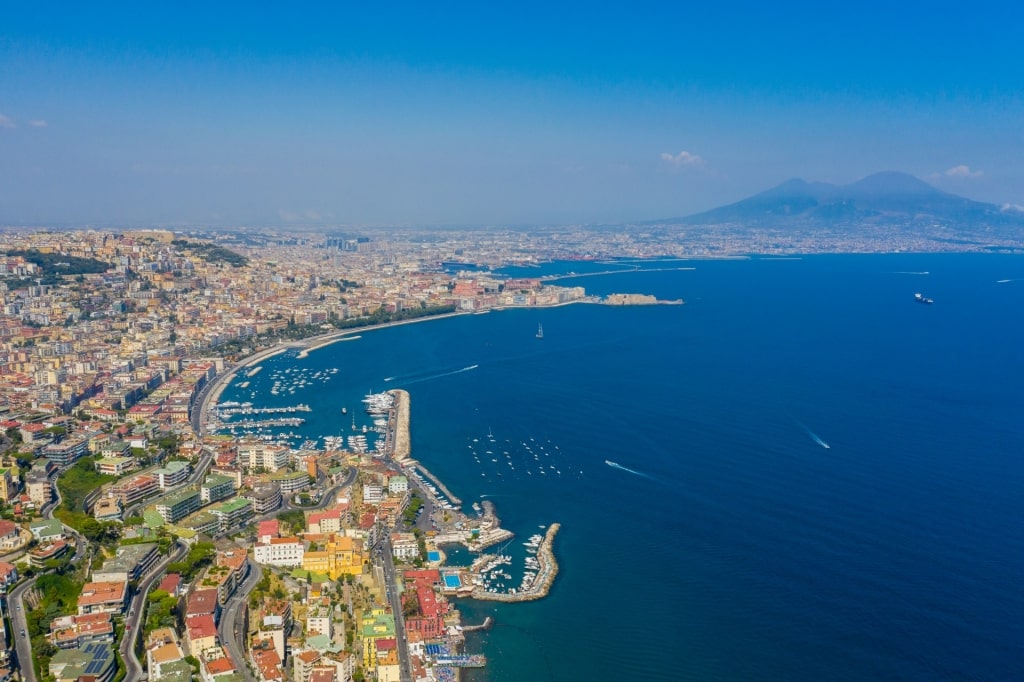
Naples
Some of the oldest cities in the world are found in southern Italy. Naples, for example, dates back 4,000 years and was a Greek colony as early as 2,000 BCE. The Greeks also colonized Sicily in 750 BCE, staying there for 500 years and leaving behind many spectacular temples and theaters.
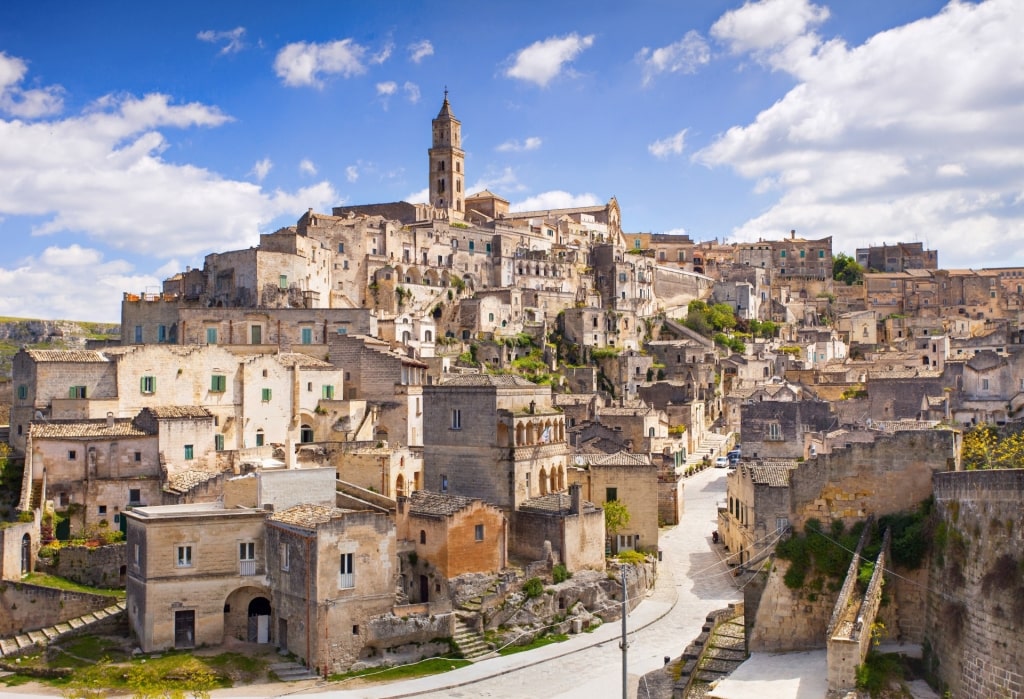
Matera
Most venerable of all, though, is the town of Matera, in the Basilicata region of Italy, which has been inhabited for an astonishing 8,000 years and is one of the three oldest cities known to man.
Waves of invaders have crisscrossed southern Italy over the millennia, all leaving their mark. The Romans followed the Greeks, but Byzantines, Arabs, Normans, Austrians, Spanish, and Bourbons have all made an impact on the culture and architecture of the country and its islands.
For centuries, in fact, Italy was a mishmash of city-states and warring territories, many with their own language and culture, until the country was unified in 1861 as the Kingdom of Italy.
To this day, Italy has a north-south divide, although this is a cultural rather than a political phenomenon. Northern Italy, the country’s industrial heartland, has been shaped by the cultures of the Germans, Celts, and French. The south, meanwhile, bears the influence of the Arabs, Greeks, and Spanish.

Naples
Italians have a very strong sense of regional identity, and you may well hear someone describing themselves as “Neapolitan”, “Sardinian” or “Sicilian”, rather than simply “Italian”.
What southern Italians do have in common is a sense of family, hospitality, and a love of life, which you’ll quickly notice on your travels.
Wildlife & Nature
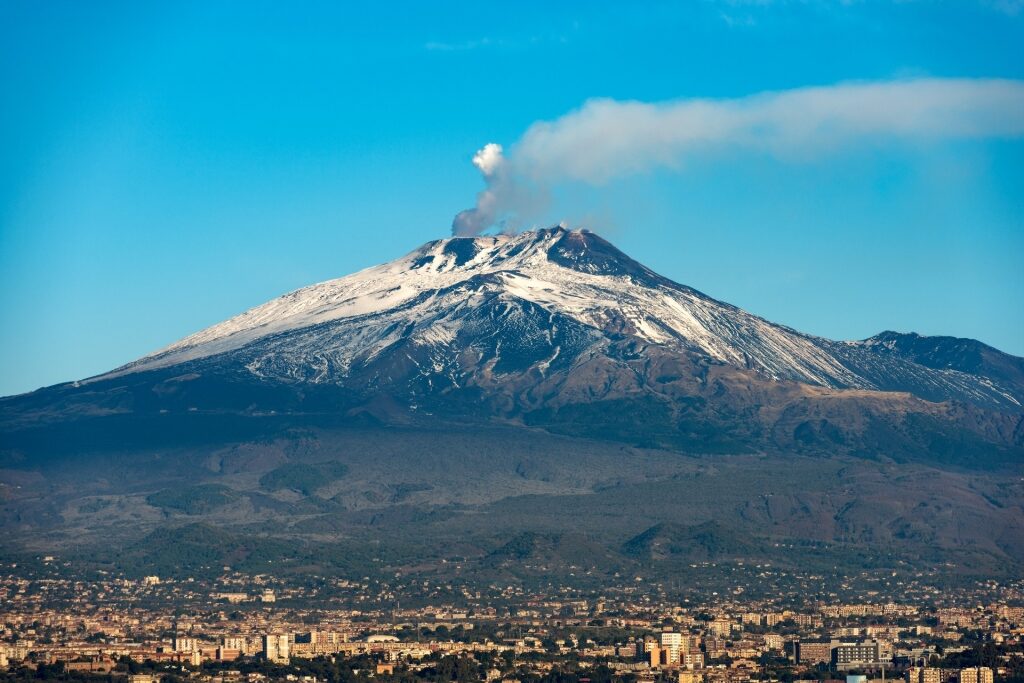
Mount Etna, Sicily
Southern Italy’s history and geography have been shaped in considerable part by volcanoes. While Vesuvius, which dominates the skyline of Naples, is dormant nowadays, Mount Etna still keeps Sicilians on their toes with its frequent eruptions. All this volcanic activity has given rise to rich, fertile soil on Etna’s slopes, perfect for wine production.
In Puglia, the “heel” of Italy, olives, rather than grapes, are the star. Just this corner of Italy alone contains more than 60 million olive trees, creating a sea of silvery gray across the flat coastal plains. You’ll find delicious olive oil on sale everywhere.
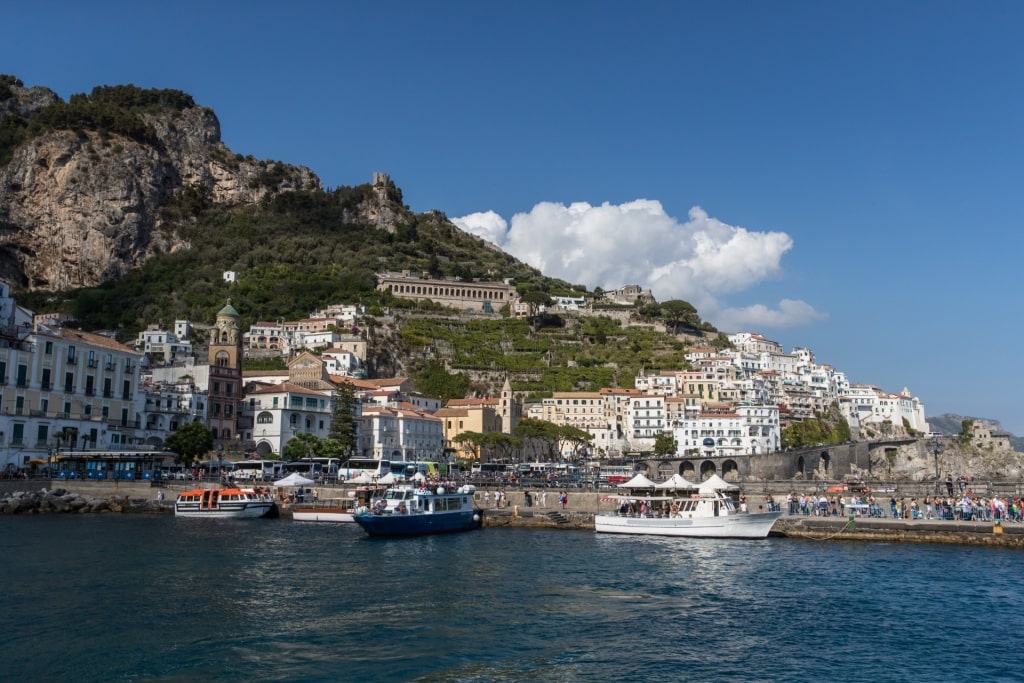
Amalfi Coast
Further north, the Amalfi Coast is famed for its citrus cultivation, where orange and lemon groves cling to the steep hillsides.
Sardinia, meanwhile, is rugged and mountainous, its rocky slopes covered in wild herbs and fragrant Mediterranean scrub. Some of the best beaches in the Mediterranean encircle the island, interspersed with tall cliffs and craggy headlands.
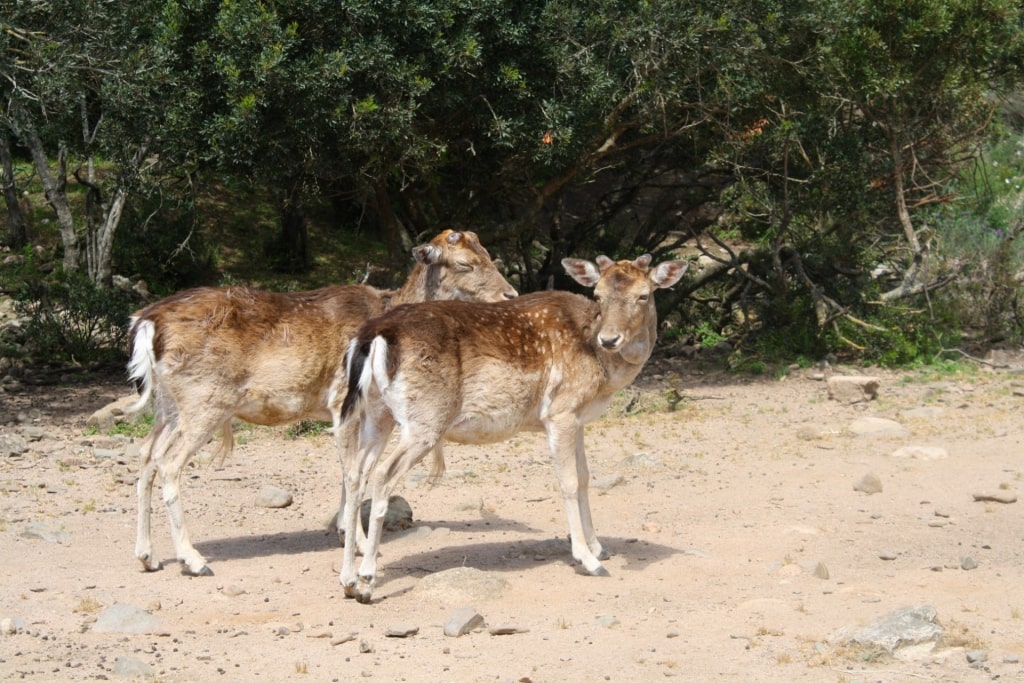
Sardinian deer
While you won’t see wildlife in the cities of southern Italy, there’s a great diversity of species in the countryside. Wild deer, a variety of lizards, bats, and birds of prey are all common.
Take to the waters off Sicily or Sardinia with a mask and snorkel and you could encounter squid, octopus, slipper lobster, sea stars, and red coral. Dolphins are frequently spotted around the coast of Italy, too.
Tips for Visiting Southern Italy

Naples
To make the most of southern Italy, take inspiration from the locals. Don’t rush. Take time to greet people and to appreciate the beauty of your surroundings.
Show respect for art, culture, and food. Italian food culture is regional, each with its own distinct cuisine, and locals take great pride in their culinary heritage.

Granita
Try local dishes and also understand Italian rituals; the morning cappuccino or espresso, the evening passeggiata, or stroll, followed by aperitivo hour, and in Sicily, the fact that it’s socially acceptable to eat creamy granita at breakfast time.
Learn about the local culture. Things move more slowly here in the hot Mediterranean sunshine. Southern Italians like to take time over meals, savoring every bite, and view relationships and family as more important than schedules.
Italians are passionate and animated. Just because people in a conversation appear to be shouting and gesticulating a lot doesn’t mean that they are arguing—they’re just expressing themselves.
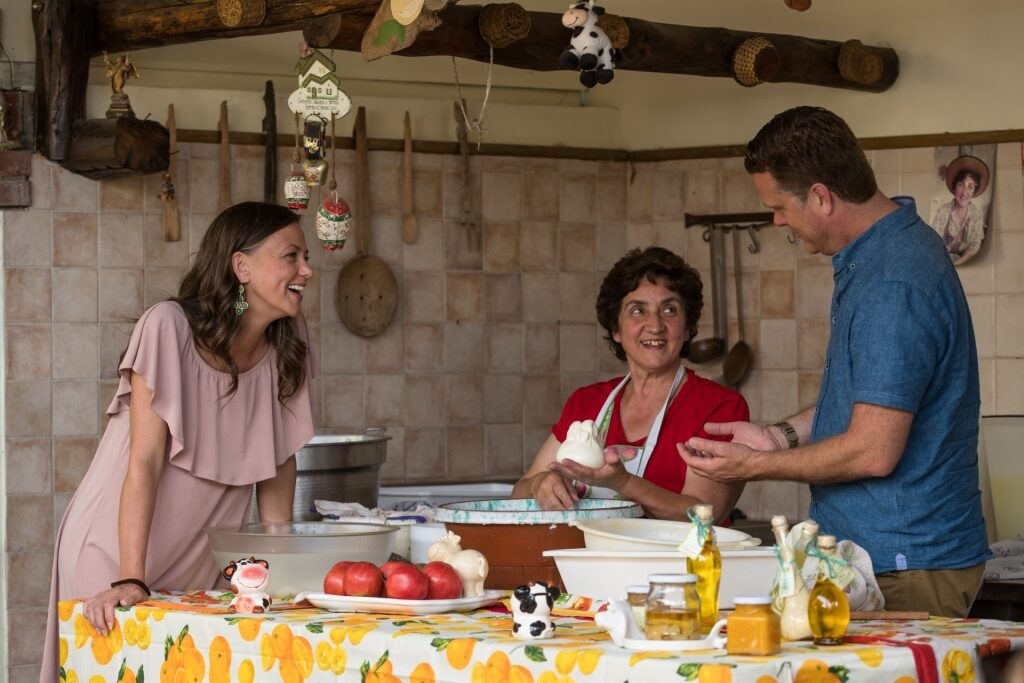
Sorrento
Learn some Italian, too. Your travels in the south may take you to places where not much English is spoken, and a simple “buongiorno” or “ciao” will be appreciated.
If you want to go to the beach, bear in mind that much of the Italian coast is occupied by chic private beach clubs, where you pay for an umbrella and lounger. There are always public beaches, though, which are available to anyone.
Things to Do & Attractions
Soak up the Glamor of Amalfi
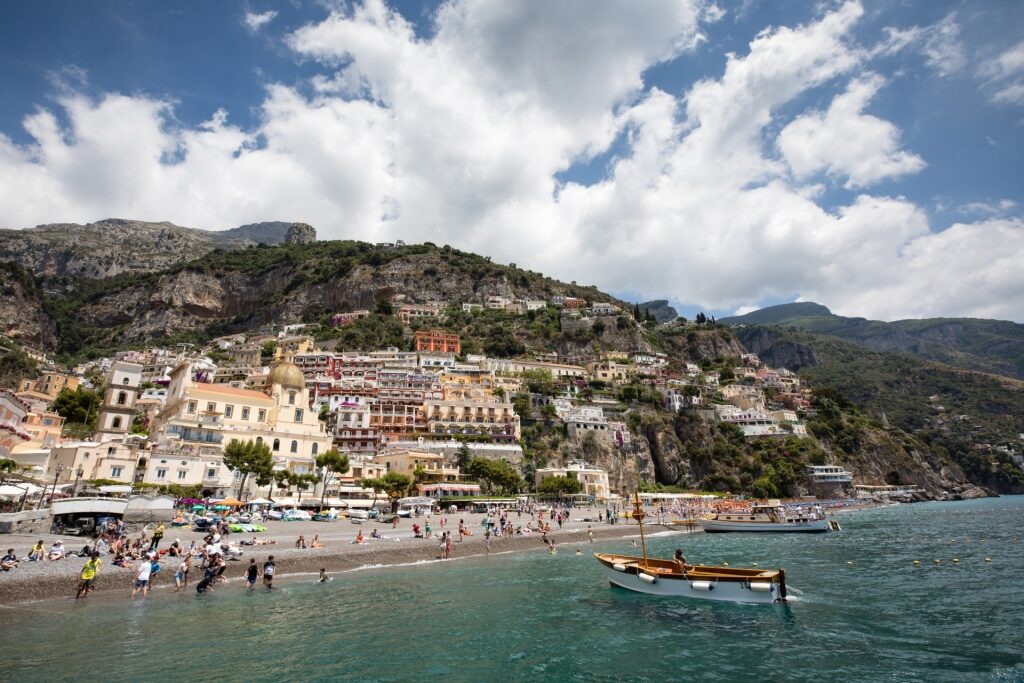
Positano, Amalfi Coast
The UNESCO-protected Amalfi Coast is a gorgeous stretch of Italian shoreline and one of the best beach destinations in Europe. Sheer cliffs plunge into the sea and houses in gelato shades cling to precipitous slopes, surrounded by lemon groves. Visit fashionable Positano, or mountaintop Ravello.
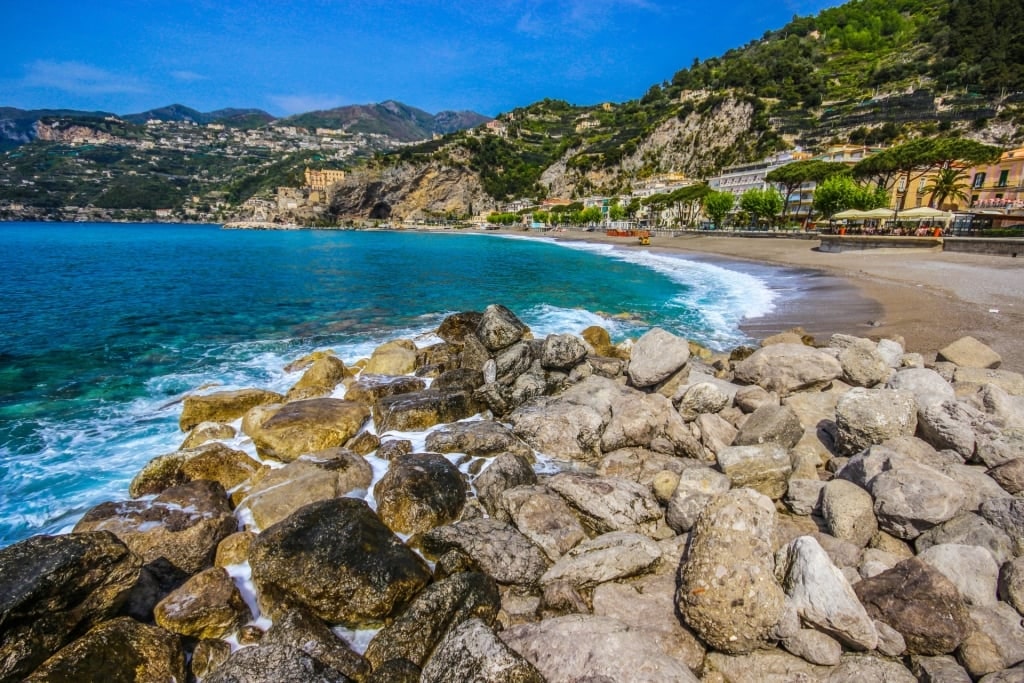
Maiori, Amalfi Coast
Beaches here are more rocky coves than long strands, but if you want a cooling dip, head to Maiori, a wide stretch of sand with a choice of beach clubs and public areas.
Read: Best Things to Do in Positano
Explore Chic Capri
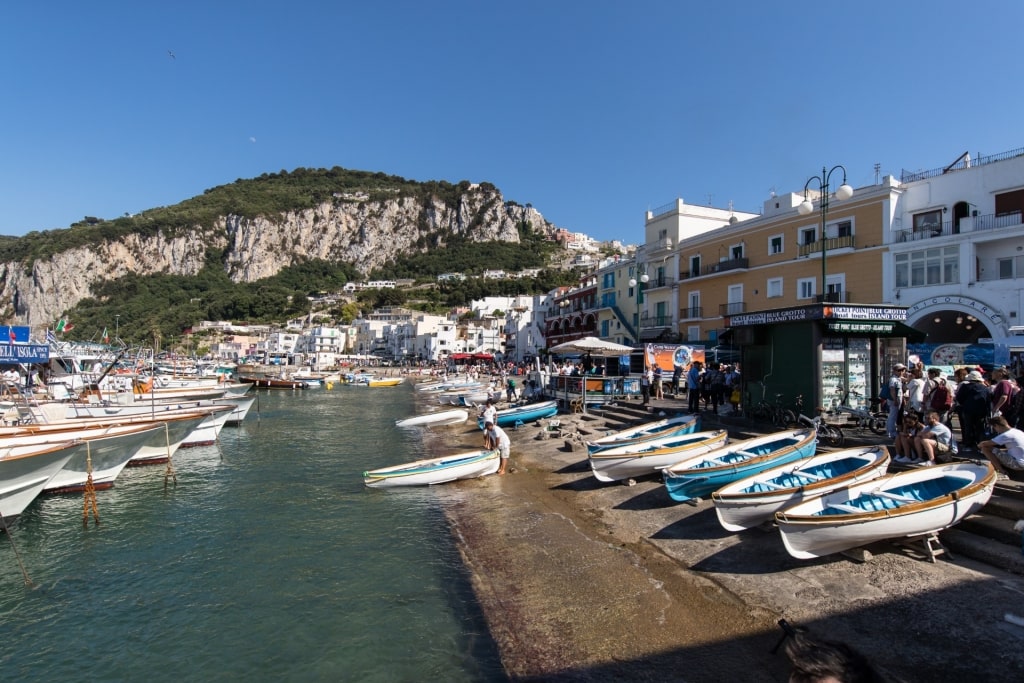
Capri
A rugged speck of an island off the tip of the Sorrentine Peninsula, the celebrity playground of Capri oozes sophistication. Lavish villas lie in serene, flower-filled Italian gardens, while chic boutiques line the narrow streets of Capri town.
Head up the hill by funicular from Marina Grande, where the ferries dock, for coffee and people-watching in the Piazzetta. Or take a boat trip around the island, stopping at the Blue Grotto, a sea cave with iridescent aquamarine water.
Discover the Secrets of Pompeii
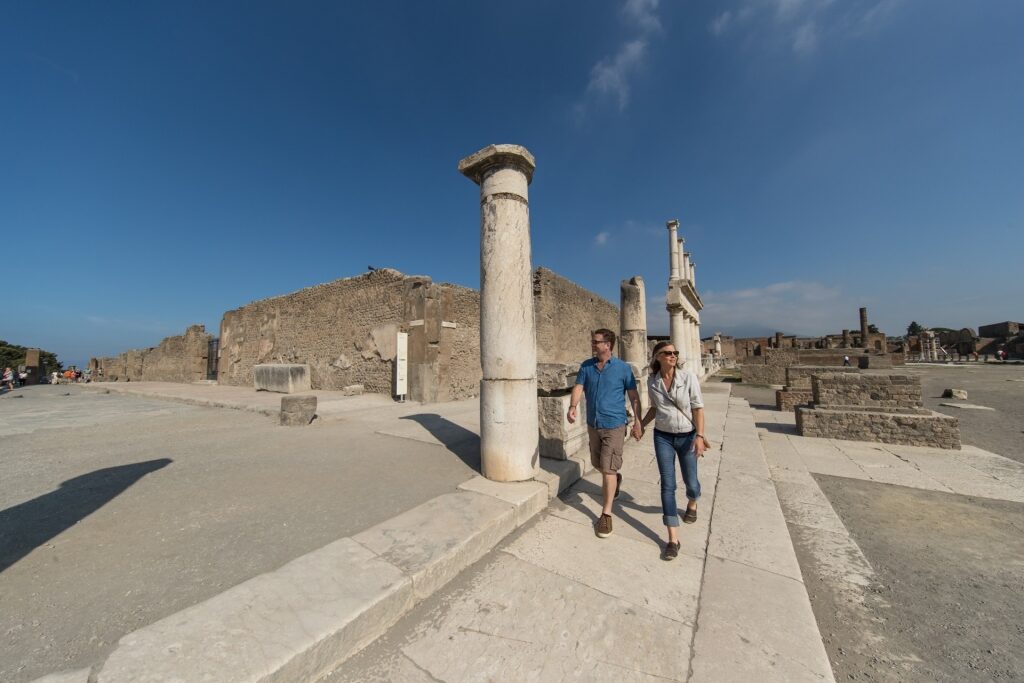
Pompeii
If you do one thing while in Naples, make it a visit to Pompeii. This ancient town was covered by burning pumice when nearby Vesuvius blew its top in 79 AD, destroying all life but preserving the ancient buildings in astonishingly good condition.
Walk the ancient Roman streets and marvel at houses, temples, and theaters. A good guide is essential for Pompeii and will bring the town’s tragic story to life.
Try Gelato in Sorrento

Sorrento
Stately Sorrento is one of the longest-established towns on the Sorrentine Peninsula, south of Naples. The town was put on the map by the romantic poet Lord Byron and his contemporaries, who drifted through Italy in the early 19th century as part of the Grand Tour, a rite of passage for wealthy young men.
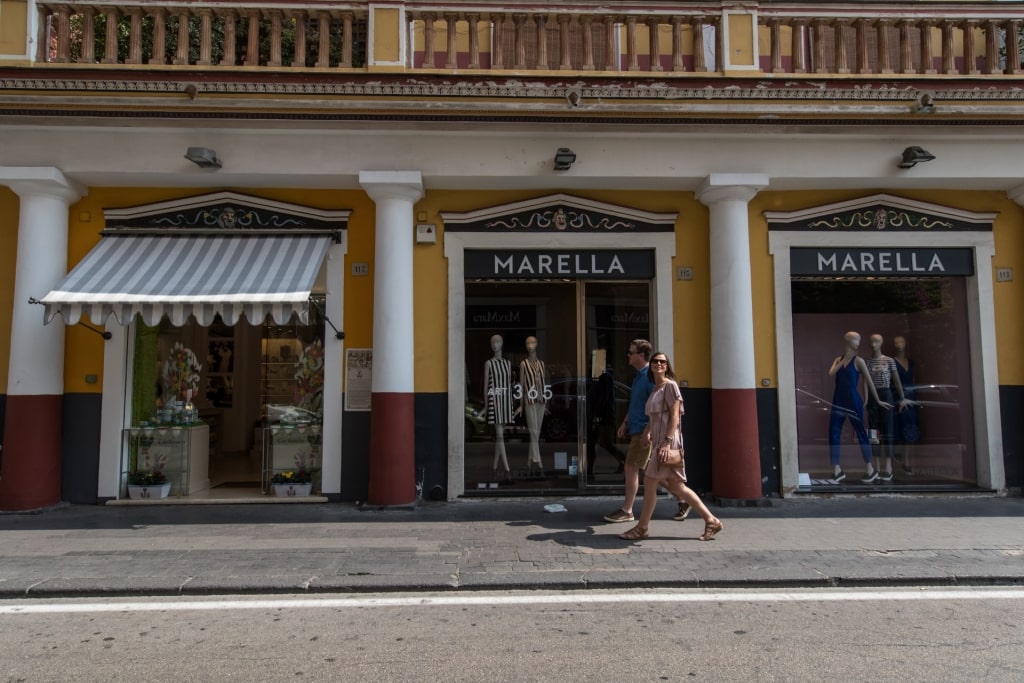
Sorrento
Wander the streets of the centro storico (old center) and stop for gelato; this is one of the best food cities in Italy, most famous for ice cream. Raki on via San Cesareo uses natural, locally sourced ingredients and has fabulous flavors from lemon to mandarin, pineapple, fig, and more adventurous combinations like vanilla and ginger.
See the Trulli Houses in Alberobello
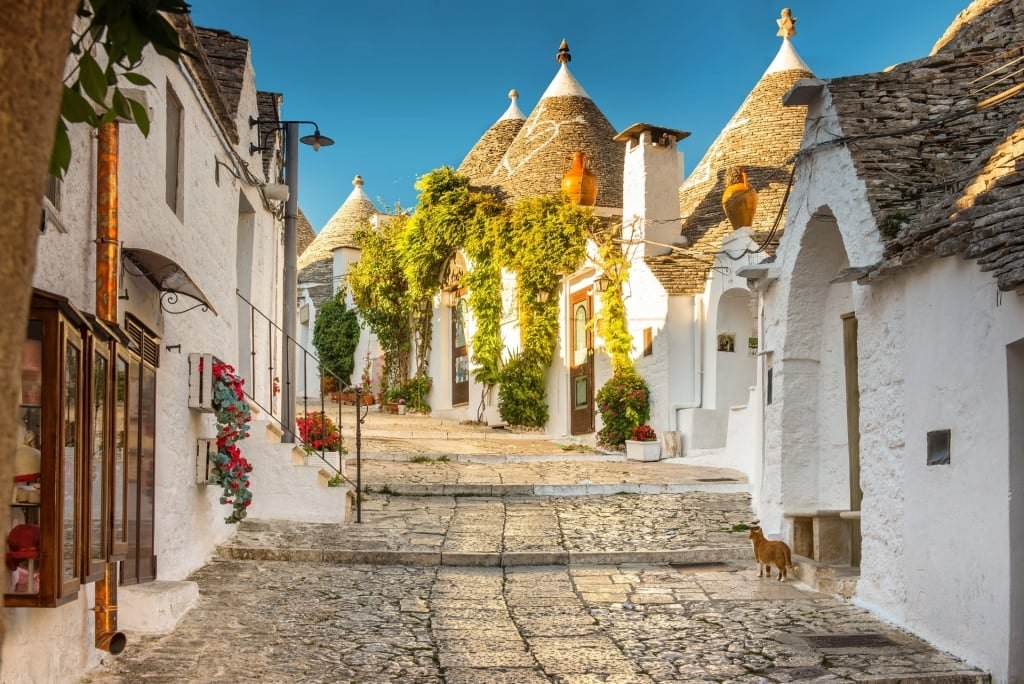
Alberobello
Alberbobello, located inland from Taranto, is an extraordinary sight; a village straight from a fairytale. Some 1,500 tiny, round, whitewashed houses, each one with a pointed drystone roof, cluster around narrow streets.
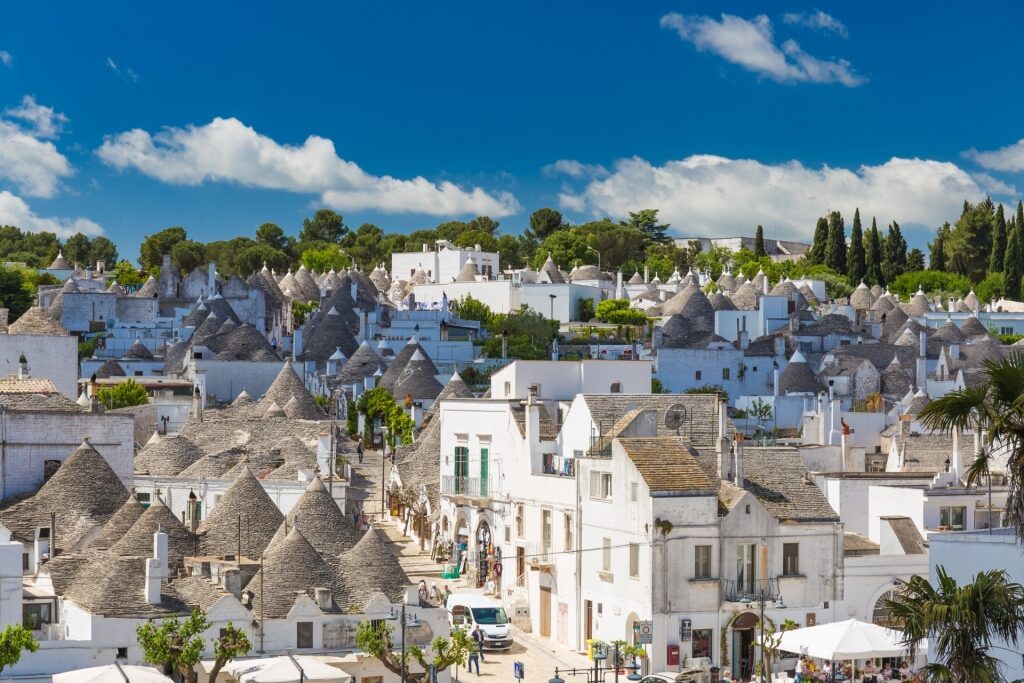
Alberobello
These trulli houses use an ancient building technique, and some date back to the 14th century, despite the fact that they were originally designed as temporary storage huts. Their roofs are adorned with ancient symbols, merging paganism with Christianity and Islam.
Today, many of the trulli contain boutiques or miniature cafés, or have been converted to boutique hotels. This little town is one of the best places to visit in Southern Italy and an absolute joy to explore.
Step Back in Time in Matera
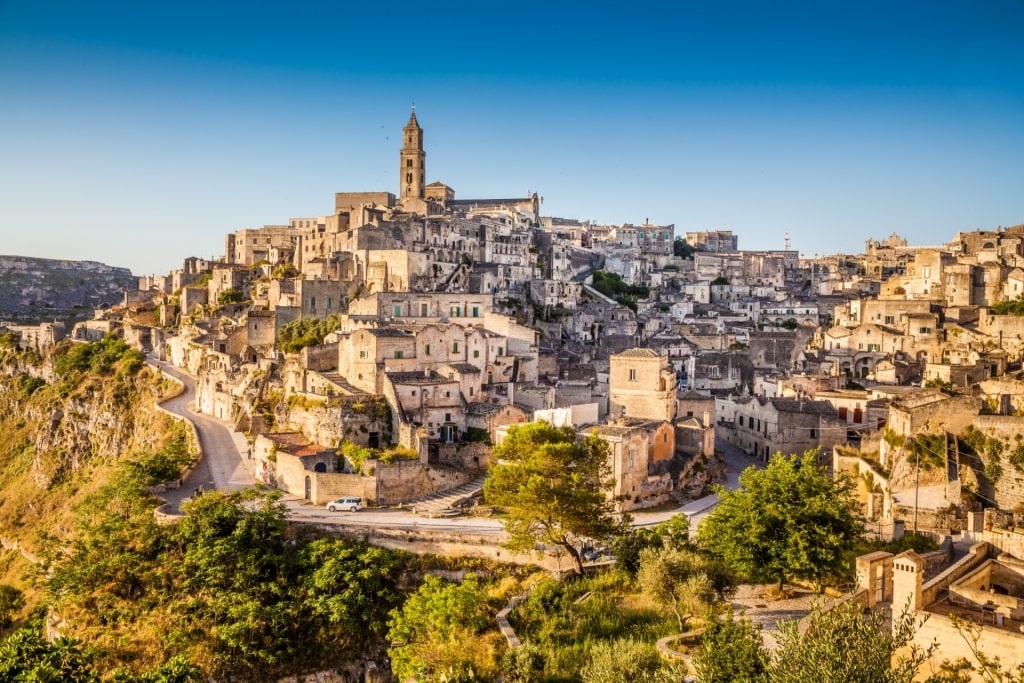
Matera
Dazzling Matera is one of the oldest continually occupied cities in the world, thanks to its sassi, or cave dwellings, natural features of the tufa limestone. People have lived here for 8,000 years. The whole town, protected by UNESCO, clings to one side of a steep gorge.
In the 1950s, Matera was regarded as the shame of Italy because of the poverty of its cave dwellers, and the whole population was rehoused in modern apartments.
Since then, the caves have been converted to chic hotels, restaurants, museums, and shops, the 150 rock-cut churches carefully preserved.
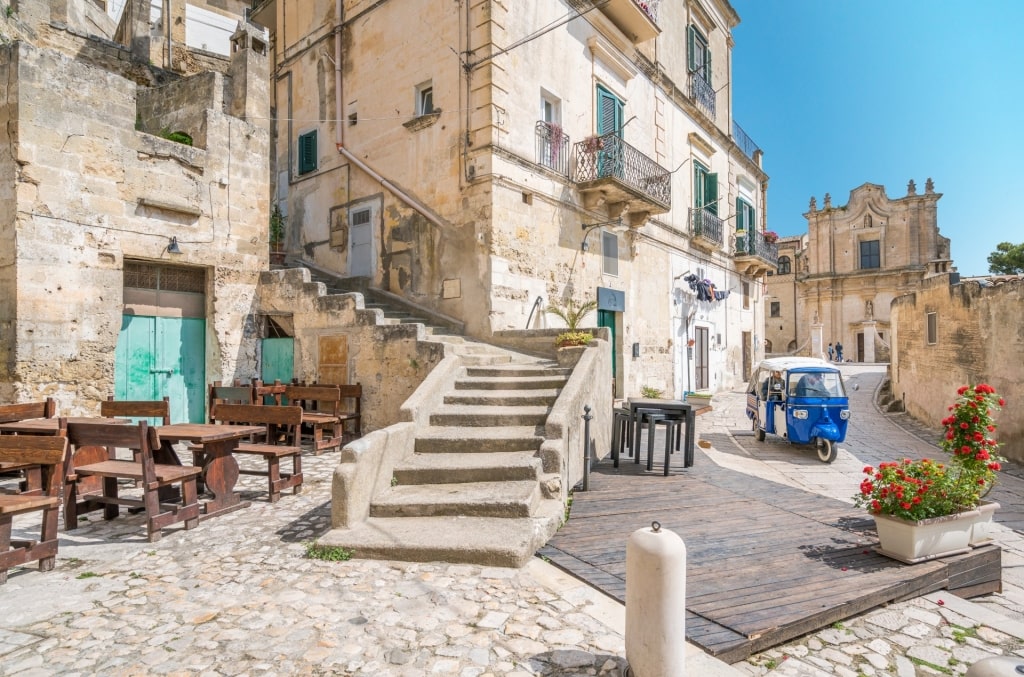
Matera
The whole town is an enchanting labyrinth of alleys, caves, staircases, tunnels, and tiny squares. You’ll recognize it from dozens of movies, but nothing beats seeing the real thing.
Read: Dazzling Markets in Italy to Explore
Head Up Mount Etna
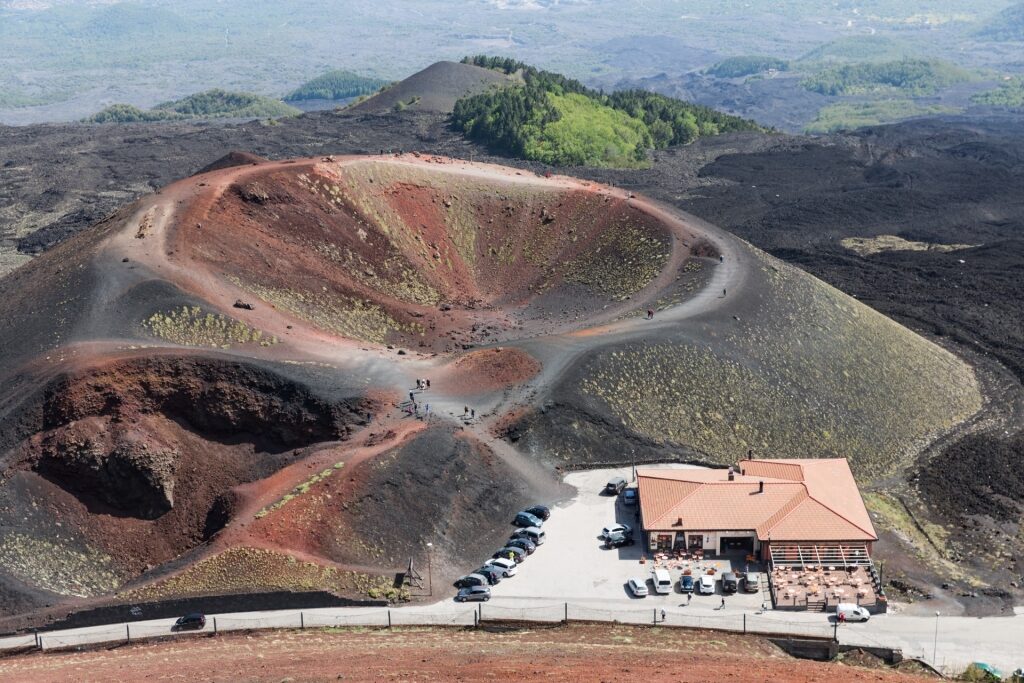
Mount Etna, Sicily
One of the most beautiful mountains in the world, Sicily’s Mount Etna dominates the northeast corner of the island, near Messina, in many ways.
Lava shapes the landscape here. The mountain’s brooding, often smoking, snow-capped summit is visible from miles around.
Locals see Etna as sacred, while farmers and wine-growers depend on its fertile soil for cultivation. Yet Etna is both active and moody, and often erupts.
Assuming the volcano is quiet, you can visit on a guided tour, viewing some of the craters and even walking on still-warm lava.
Admire Taormina’s Greek Amphitheater
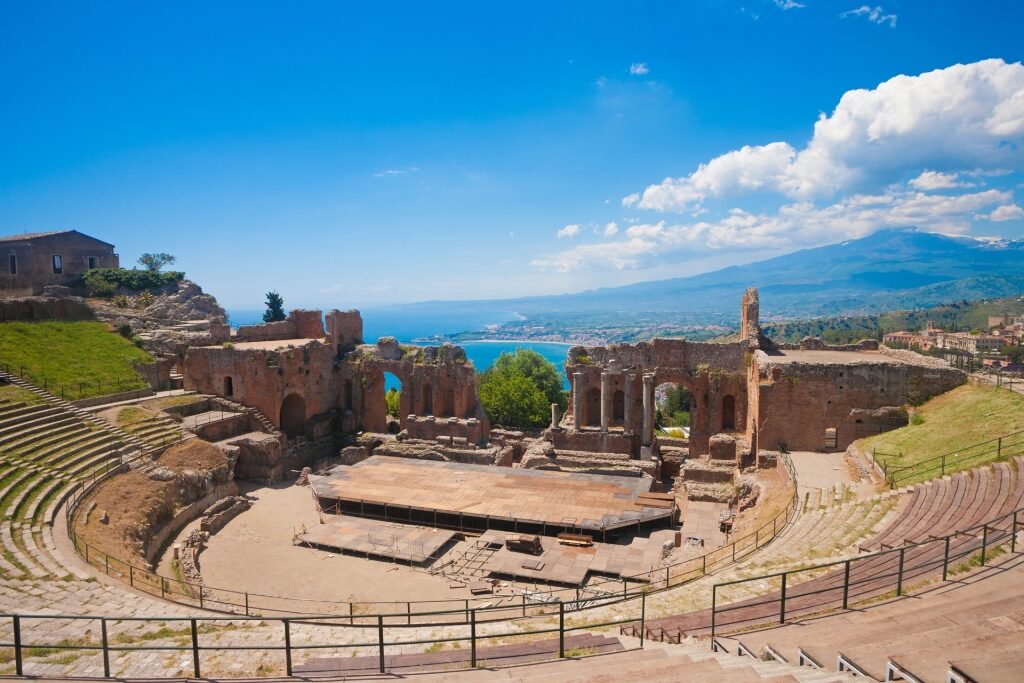
Teatro Greco, Taormina
Located high on a hill above the port of Giardini Naxos, close to Messina, Taormina enjoys supermodel good looks and is, without doubt, one of the most beautiful southern Italy cities, dating back to the fourth century BC.
Head straight for the magnificent Teatro Greco, an ancient Greek amphitheater clinging to the hillside, with Mt. Etna as its dramatic backdrop.
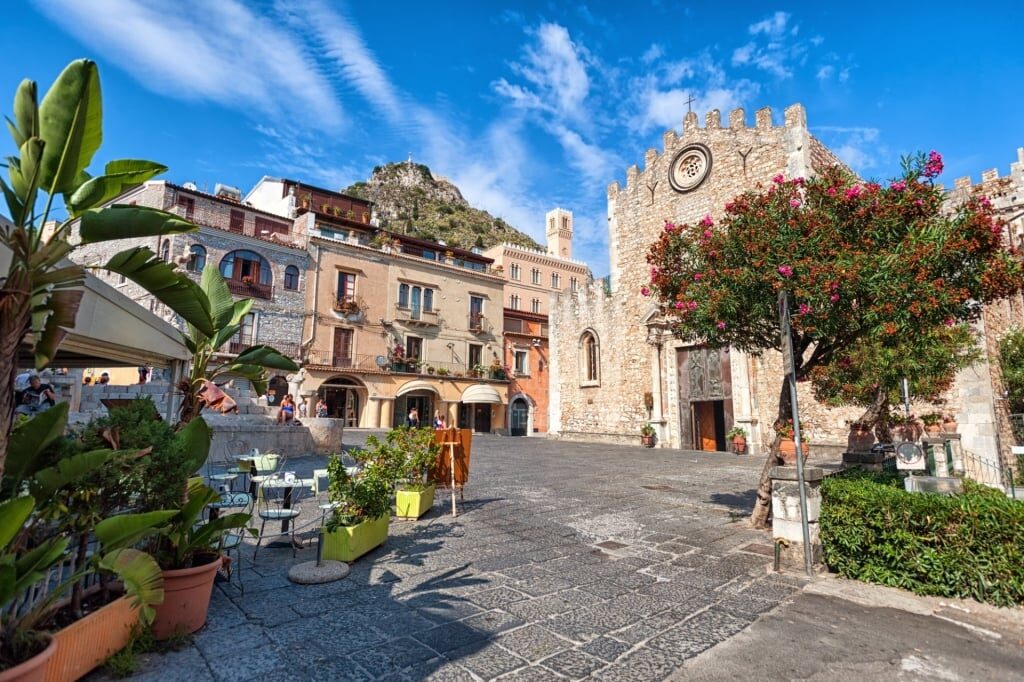
Corso Umberto I, Taormina
Wander along Corso Umberto I, the swish main thoroughfare, stopping to admire elegant old churches, the 12th-century clock tower, and the Piazza del Duomo, a 17th-century baroque fountain at its center.
Call into Laboratorio Pasticceria Roberto for the best cannoli in this Sicilian town. The crunchy cannoli are filled with sweet ricotta on the spot, so they’re as fresh as can be.
Paddle on Poetto Beach
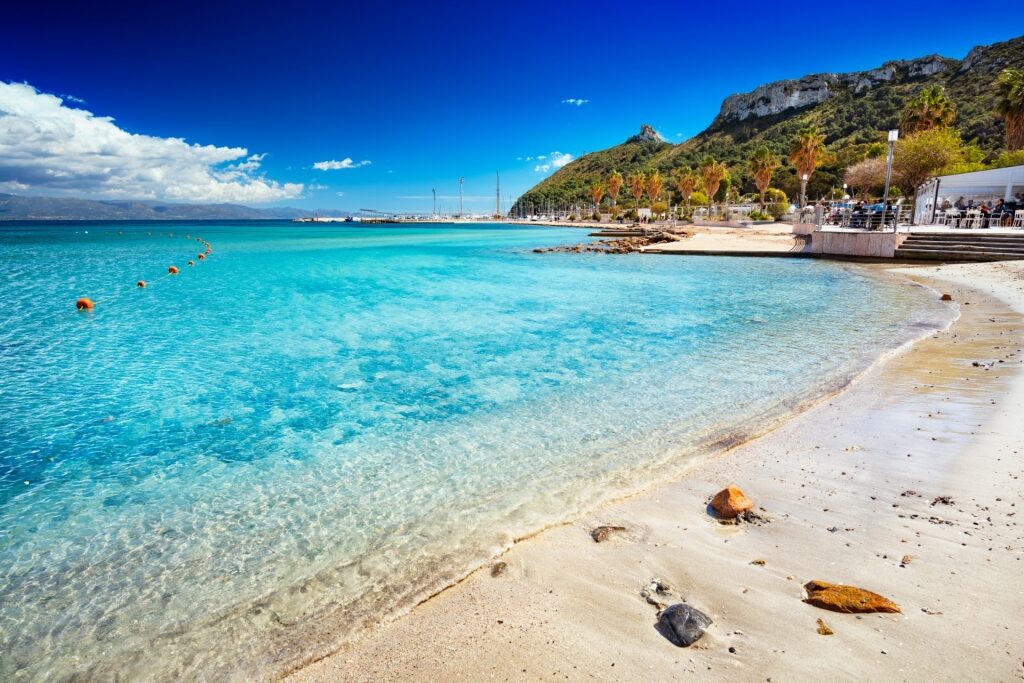
Poetto Beach, Cagliari
One of the best beaches in Sardinia, Poetto is where locals from Cagliari come to play, with its dreamy four-mile curve of soft sand. You’ll find everything here, from kayaks to rent to beach volleyball, kite surfing, and scuba diving schools.
Kiosks and restaurants line the beach, and there’s a long promenade for strolling, snacking, and people-watching. The seabed shelves very gently, so the beach is perfect if you’ve got children in tow when you visit Sardinia.
Read: Best Beaches in Italy for Families
Wander Around Ancient Nora
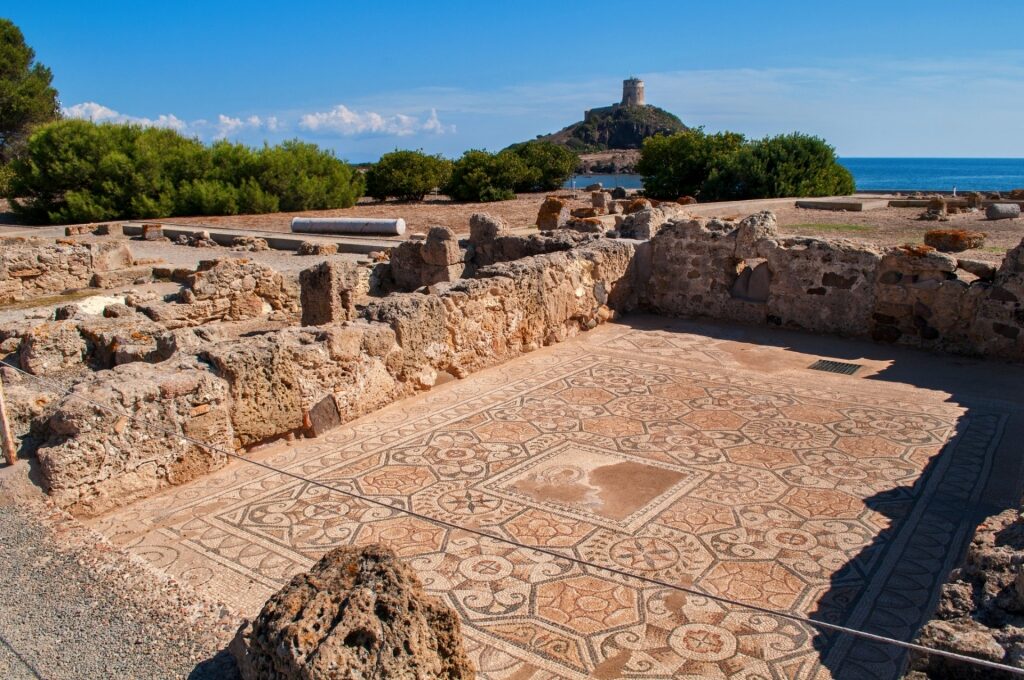
Nora
Southwest of Cagliari, the ruined city of Nora dates back to the 8th century BC, when it was founded by the Phoenicians. Later, in the Roman era, Nora became the island’s capital and was a substantial trading post.
The city was abandoned by the eighth century as Arab raids were becoming increasingly threatening and sea levels were rising; the site is partly submerged today.
On your visit, you can see a Roman theater, the Forum and aqueduct, and the remains of the old Roman baths, as well as ancient villas and mosaics. For something different, book a snorkel tour and glide over old Roman roads and intricate mosaics on the sea bed.
Food & Drink

Pizza
Southern Italy has a distinctive cuisine, with plenty of delicious specialties to try. Naples, of course, is the home of the best pizza in the world, with a thin crust, an intense puree of fresh tomatoes, fresh, torn basil, and lots of mozzarella.
Or try ragù, a rich tomato and meat sauce with wide-ribbon pasta. Seafood features on every menu; linguine al cartoccio is linguine pasta with olive oil, tomatoes and white wine, as well as liberal amounts of shellfish, all served in a paper or foil parcel.

Limoncello
Meals in Naples are finished with a glass of limoncello, the locally made lemon liqueur, sweet but sharp at the same time.
Start your day with granita al caffe before you explore Sicily’s best places. Granita is like a fruity sorbet, served with a dollop of fresh cream and a brioche bun.

Cannoli
If that doesn’t fill you up, have some cannoli with your morning cappuccino. This irresistible confection consists of a crispy fried pastry dough formed into a tube, stuffed with sweetened ricotta, and sprinkled with chopped pistachios.

Arancini
While you’re exploring, stop for street food. Arancini is a delicious snack of deep-fried rice balls in breadcrumbs, filled with either stretchy mozzarella or meat and tomato sauce.
Sicily is famed for its seafood, too, which comes in all forms. Try caponata, a stew of eggplant, a local staple, and celery, with assorted shellfish, potatoes, and capers.
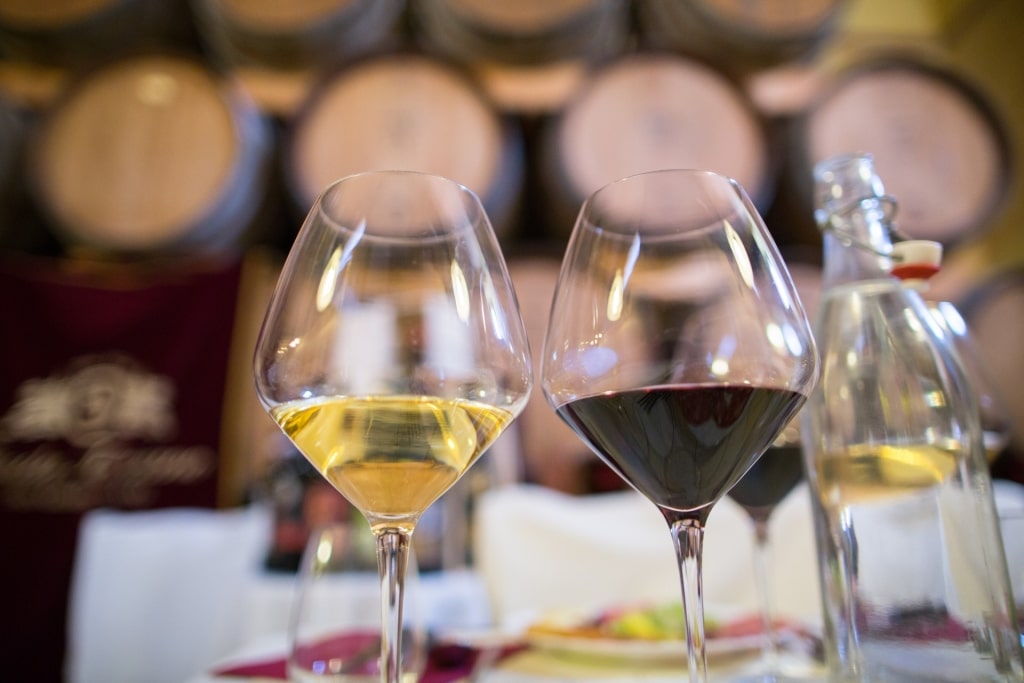
Wine
While you’re in Sicily, sample some of the local wines. Made from grapes grown on the fertile slopes of Etna or the sun-drenched plains near the coast, Sicilian wines range from dry and delicate to smooth and intense.

Burrata
In Puglia, the far south of Italy, you’ll find focaccia bread everywhere, studded with tomatoes and herbs. Don’t pass up a chance to try creamy burrata, arguably the best in Italy, or orecchiette, tiny shapes of hand-made pasta typically served with broccoli, anchovies, ricotta, and garlic.
Panzerotti, meanwhile, are deep-fried parcels of dough stuffed with mozzarella and tomato, or mozzarella and ham.

Culurgiones
Sardinia has its own food culture, often robust and meaty. Su porcheddu is a slow-roasted suckling pig, while fregola is a semolina pasta, best served with seafood in a saffron broth.
Look out, too, for culurgiones, like oversized ravioli, stuffed with potatoes, pecorino cheese (an island specialty), garlic, nutmeg, and mint.
Best Time to Visit Southern Italy
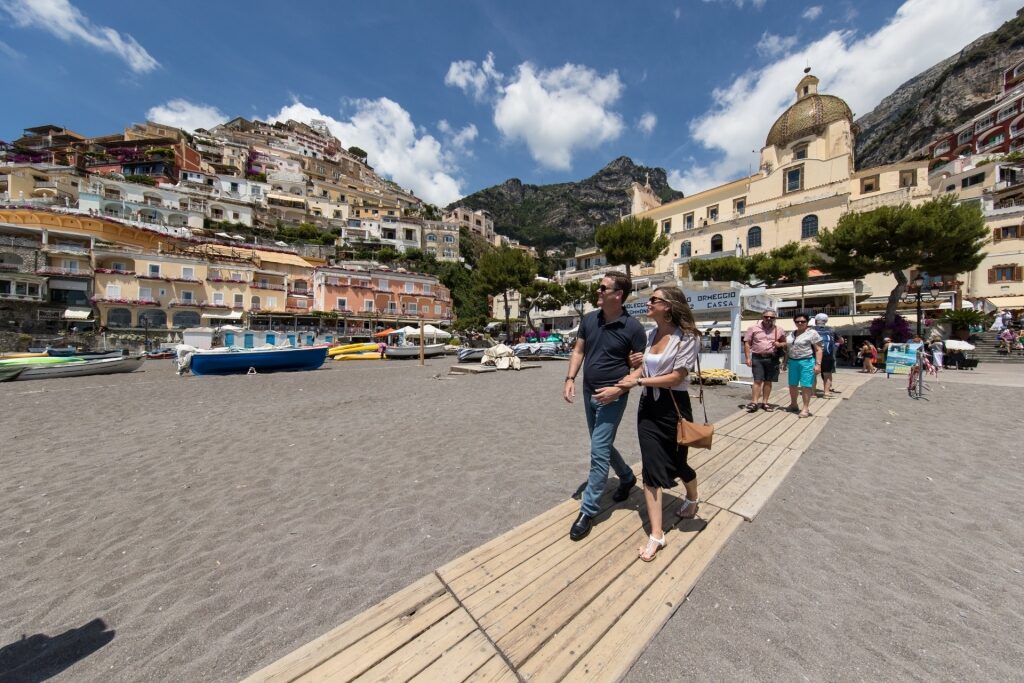
Amalfi
Southern Italy enjoys long, warm summers, the season lasting from May to October. In October, the sea is still warm enough for swimming.
Take care in the hottest months, July and August, not to overheat. Pace yourself; combine sightseeing with some beach time, or a long, relaxing lunch and a siesta, and head out again in the late afternoon.
Read: Unforgettable Ways to Experience Italy in the Summer
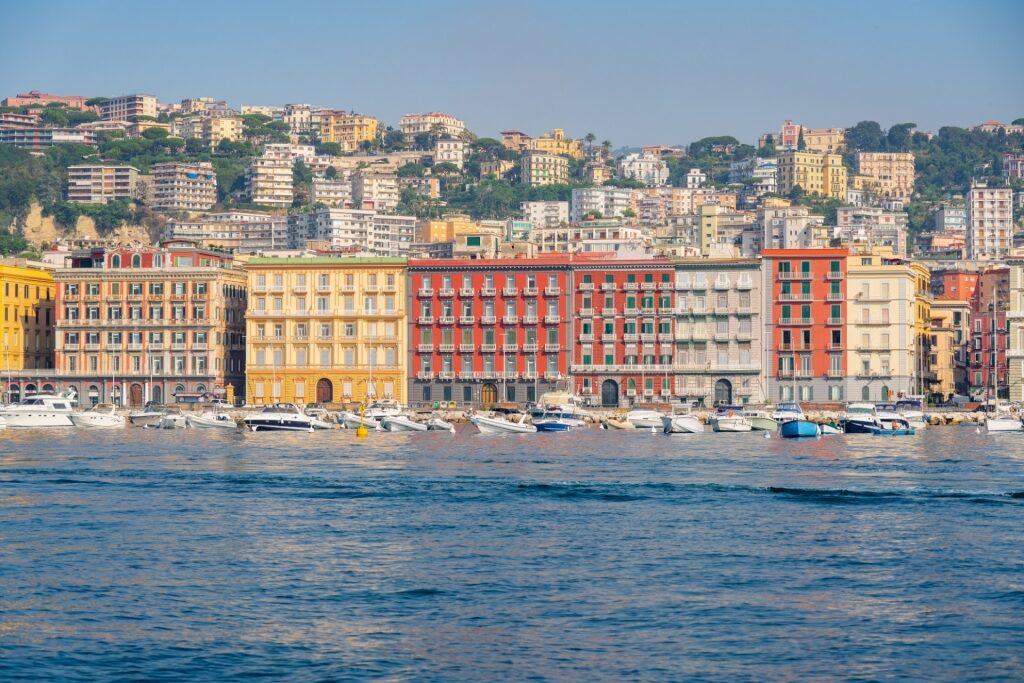
Naples
Ready to discover the delights of southern Italy? Browse our cruises to Italy and book a luxurious Mediterranean vacation with Celebrity.
